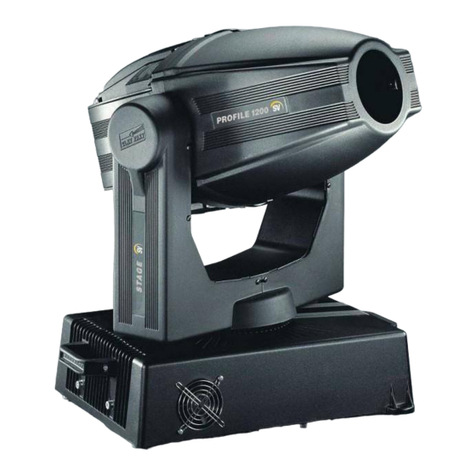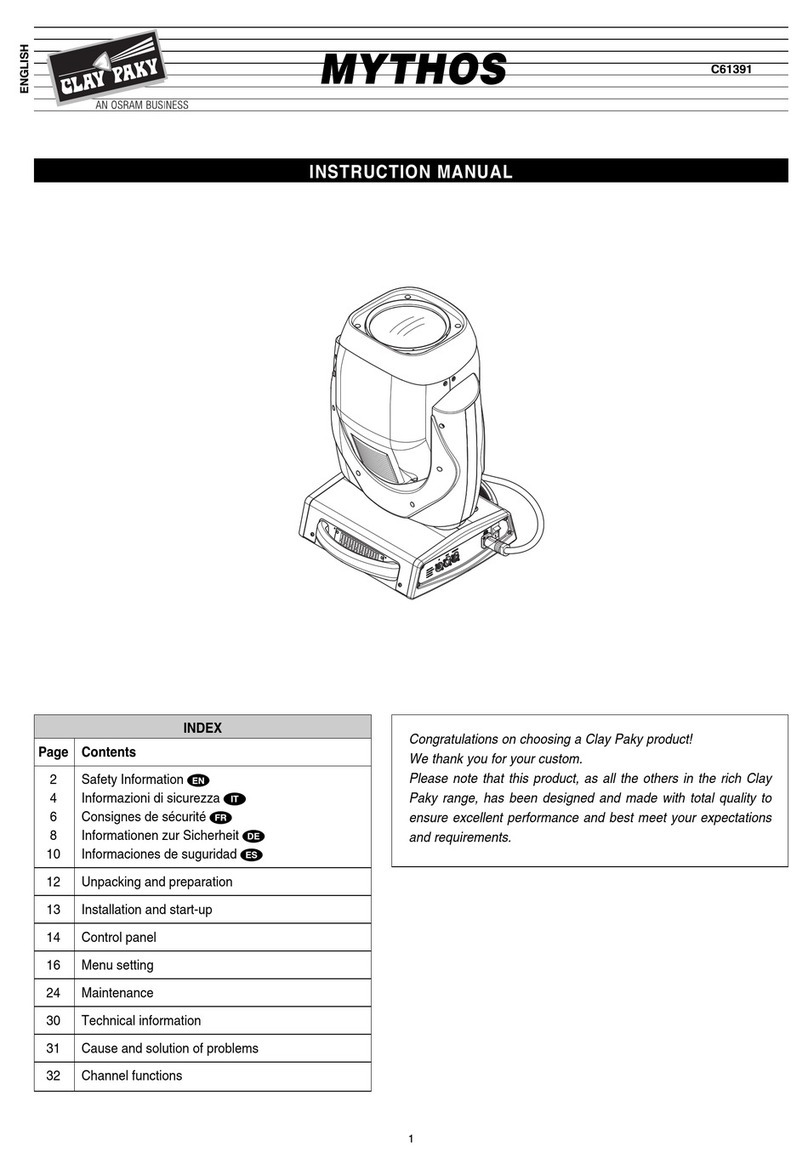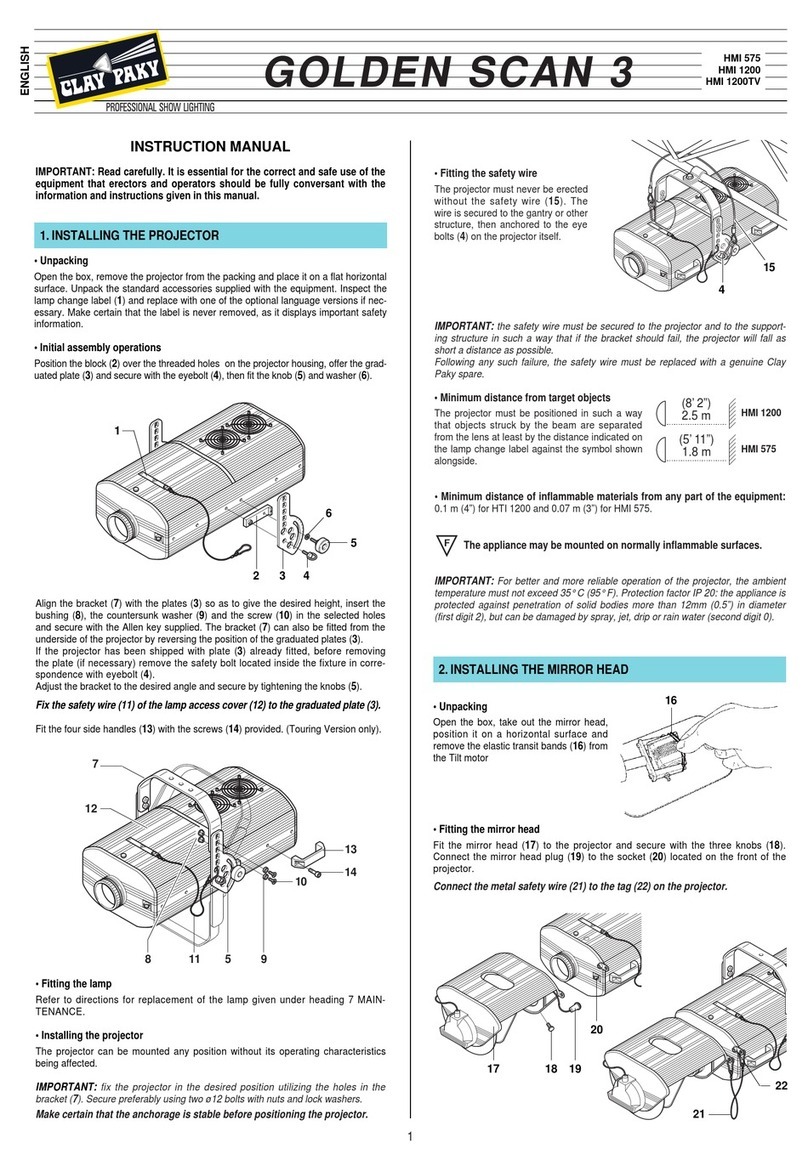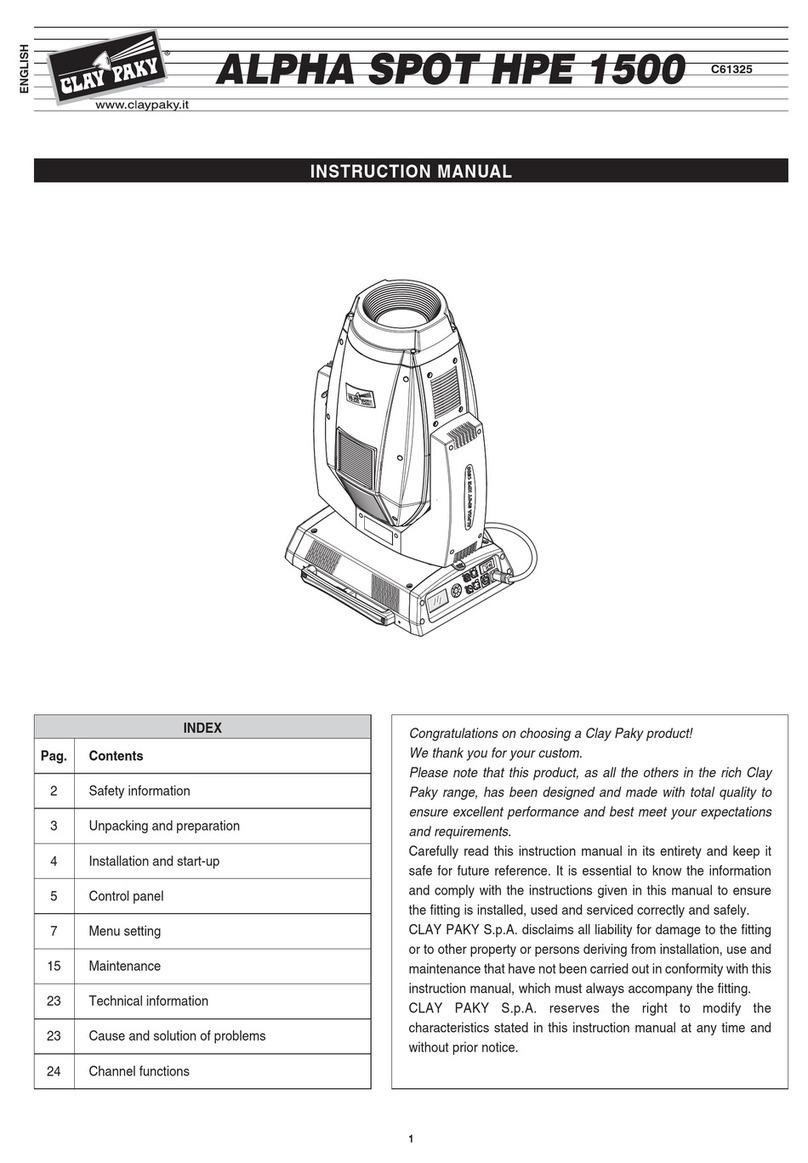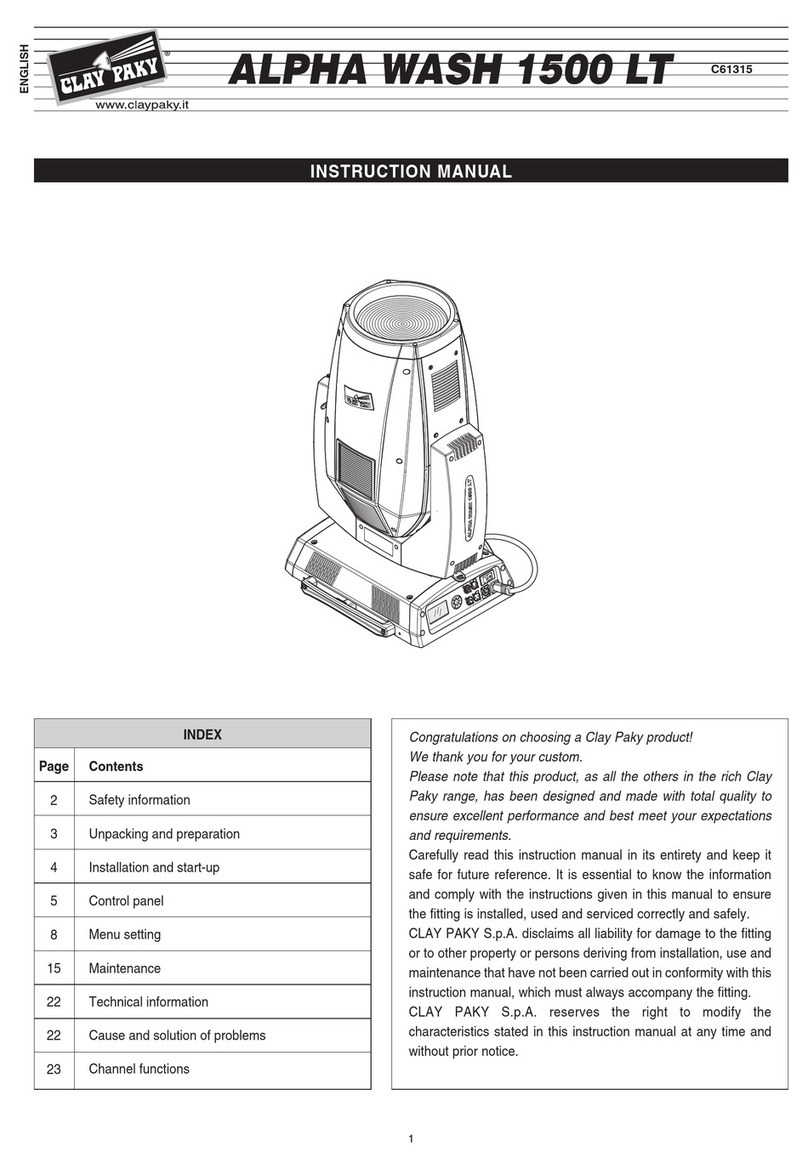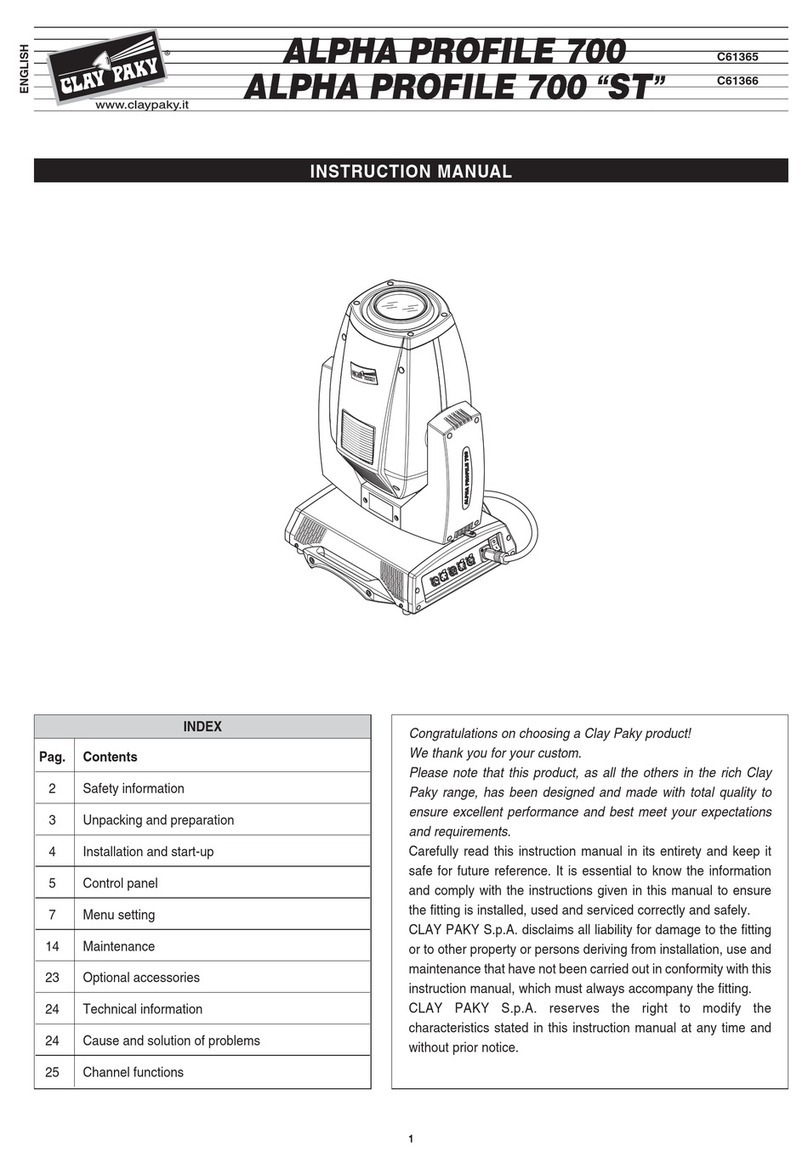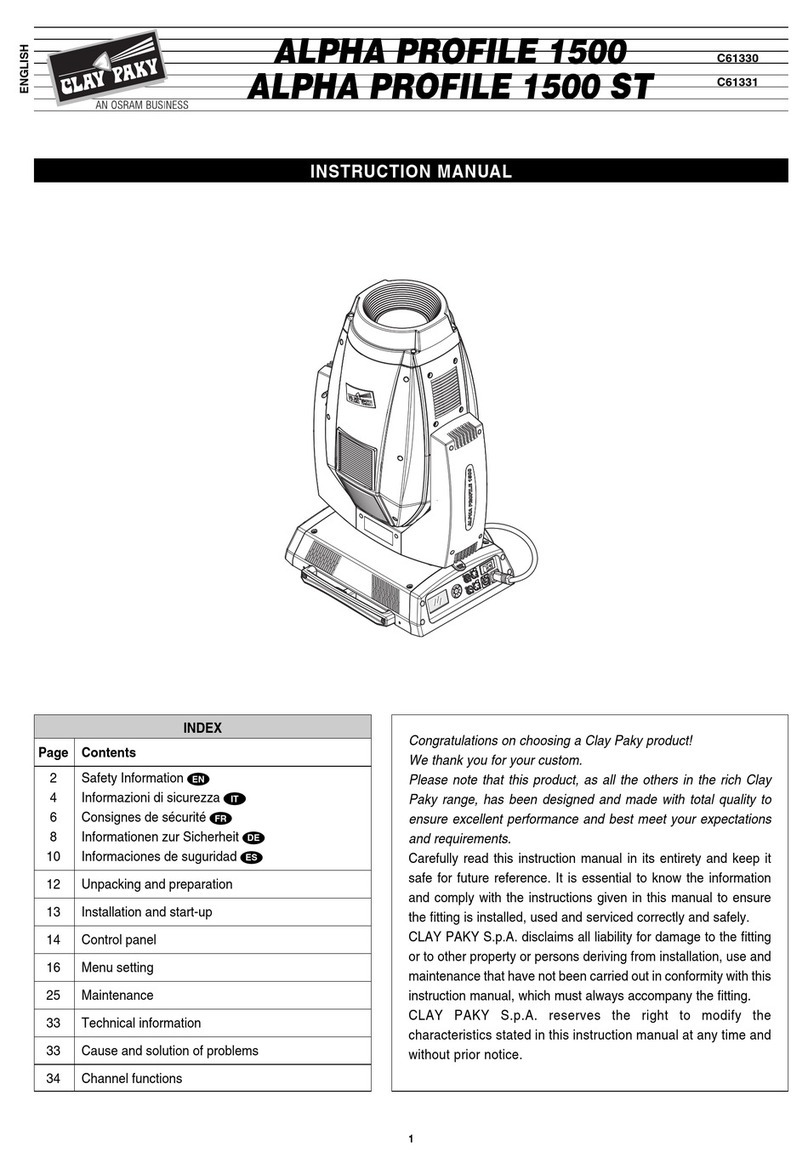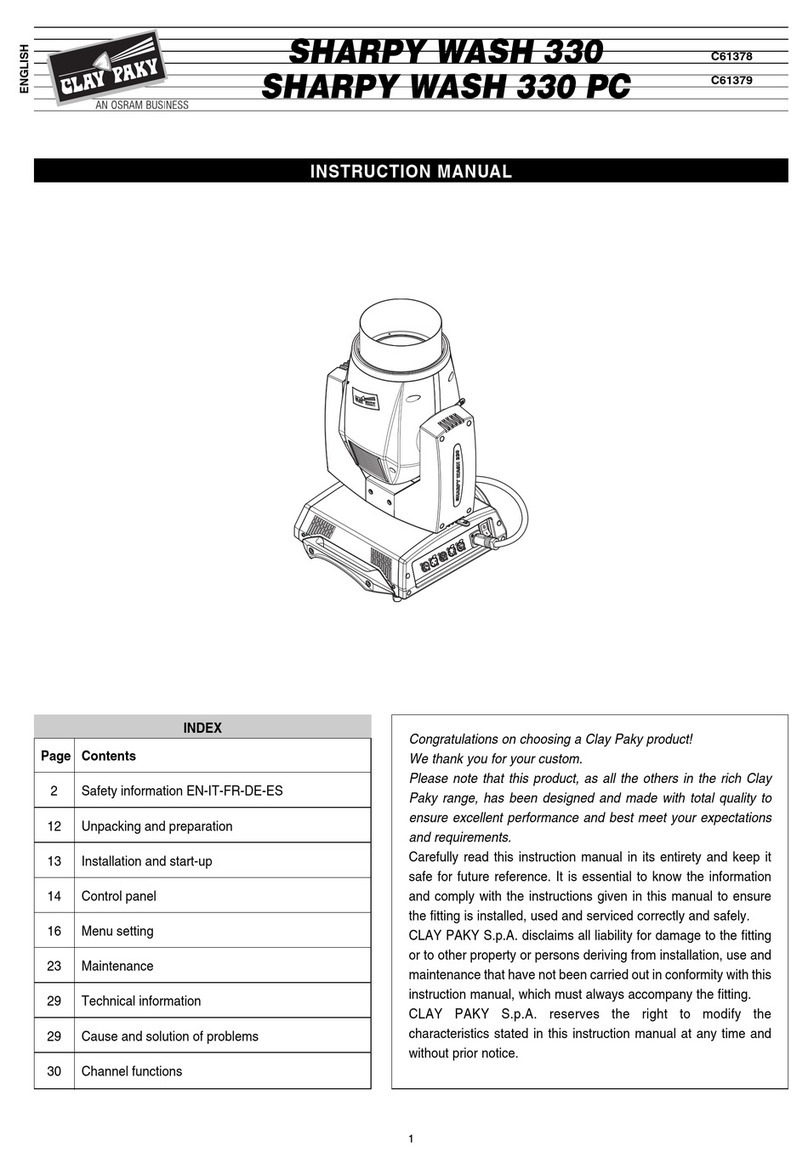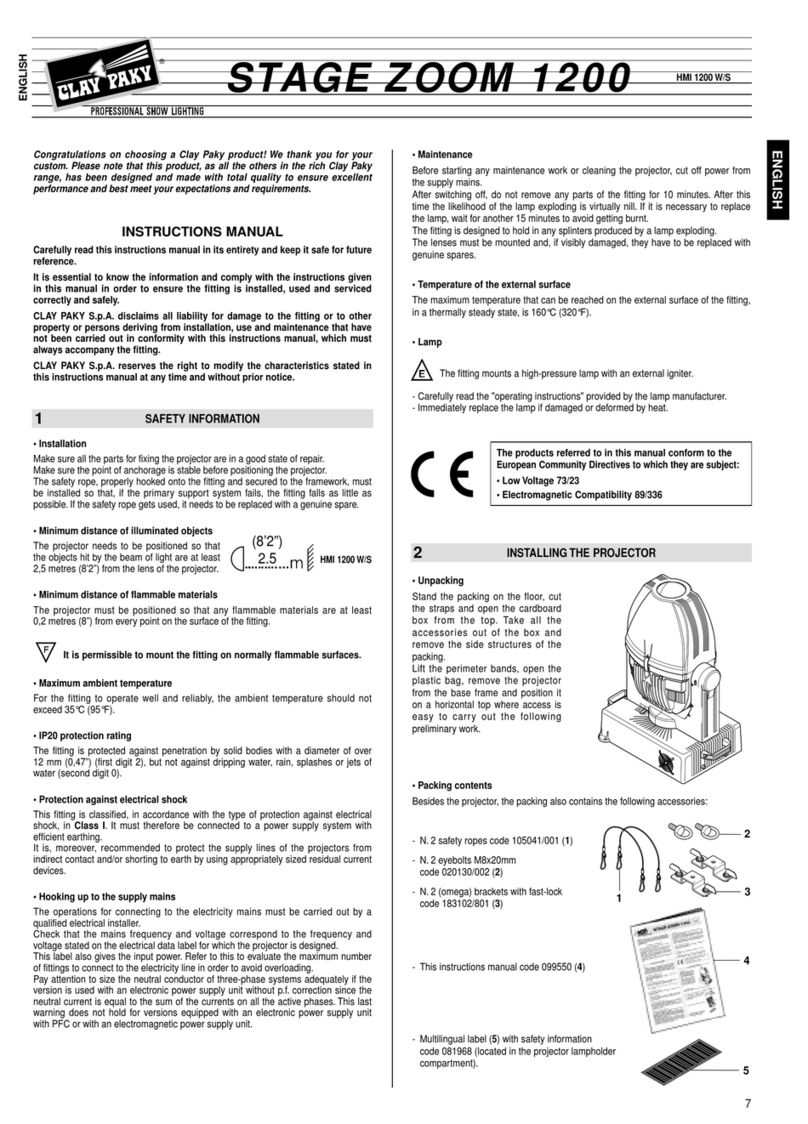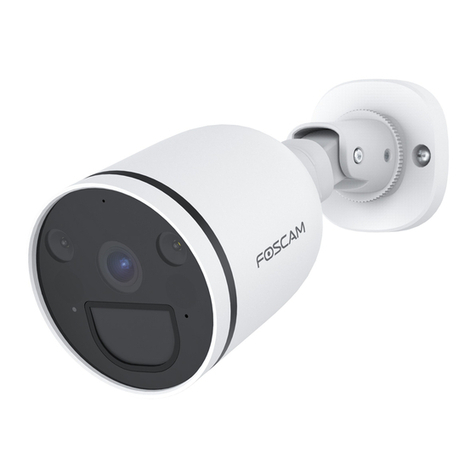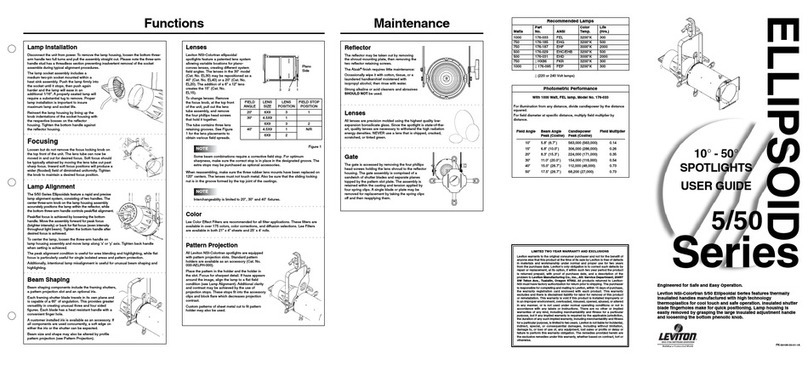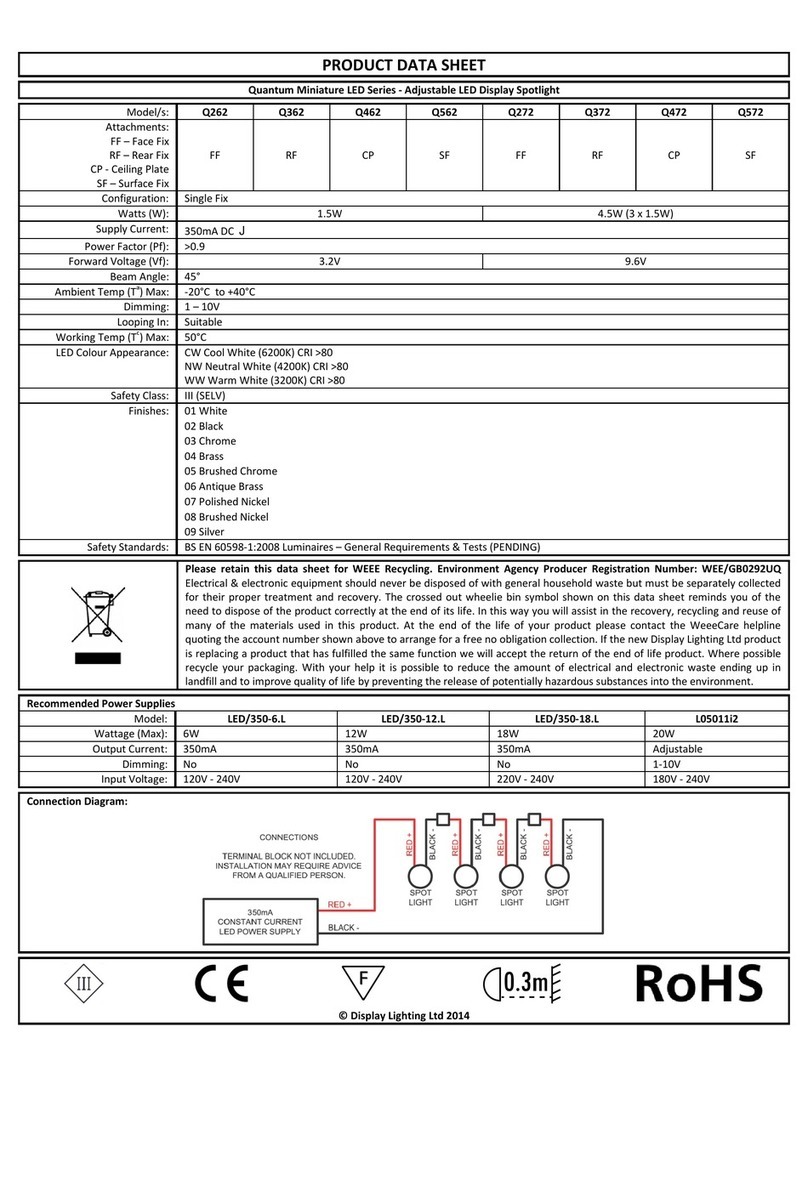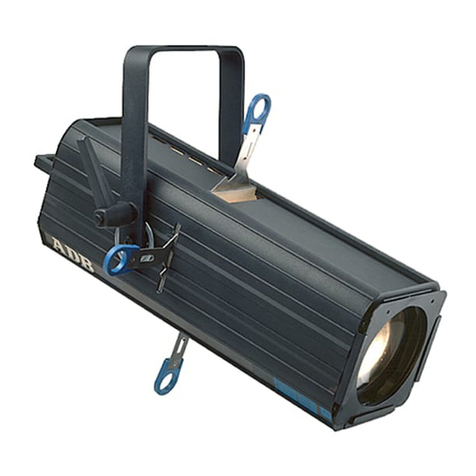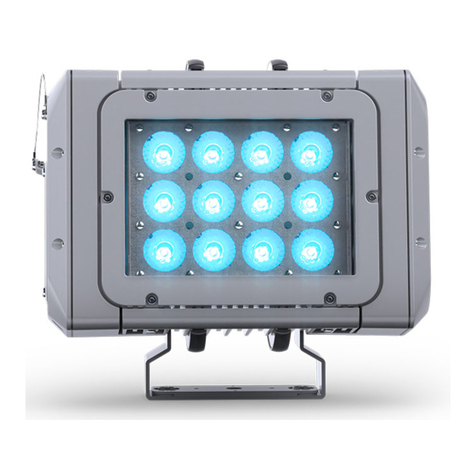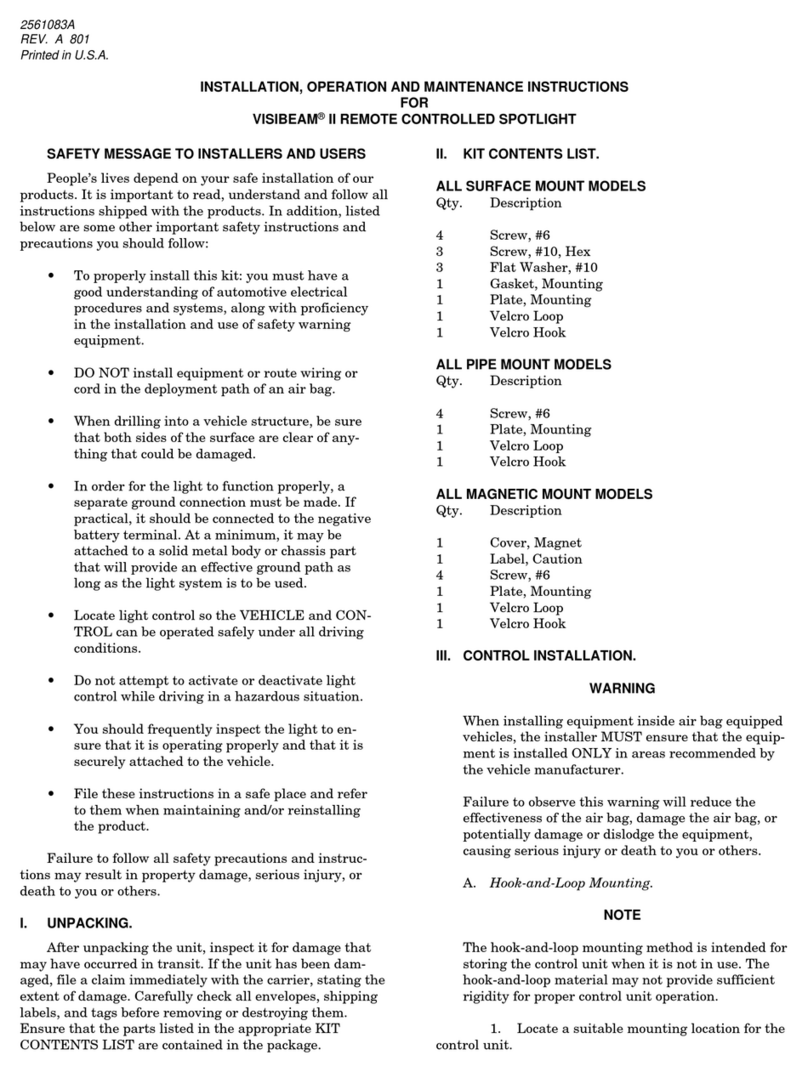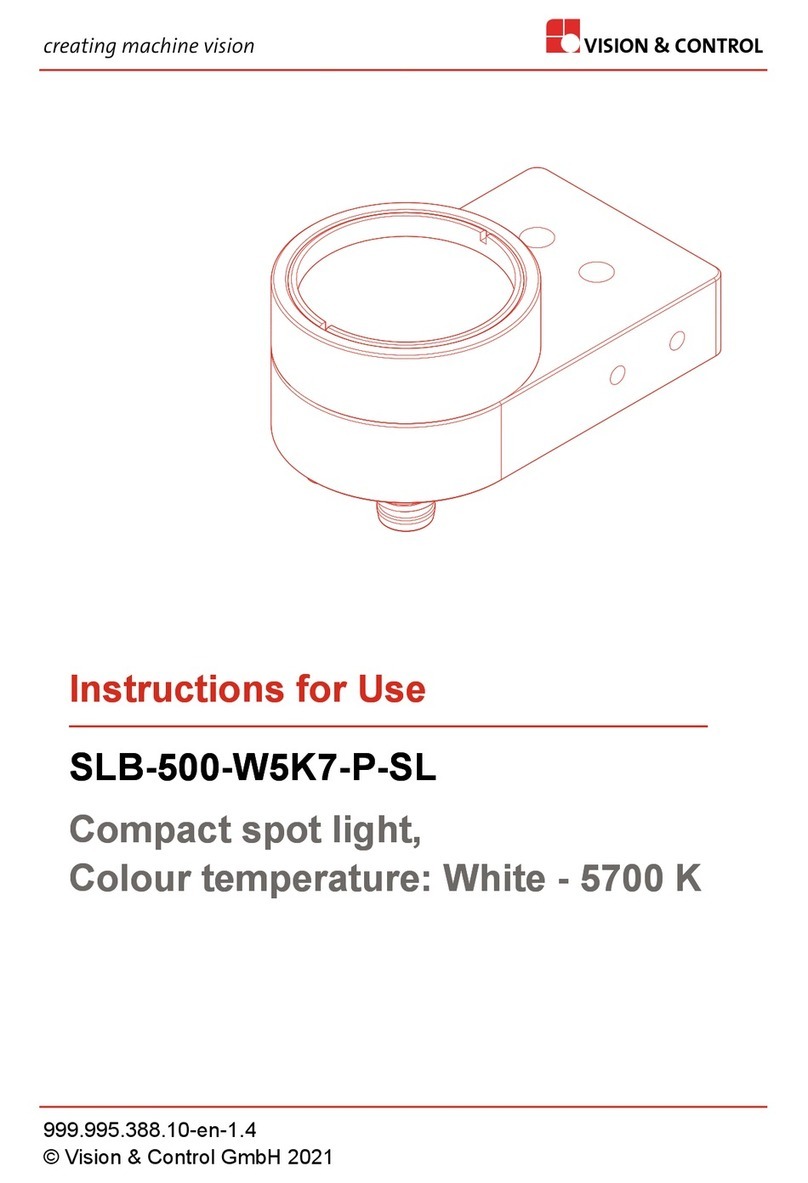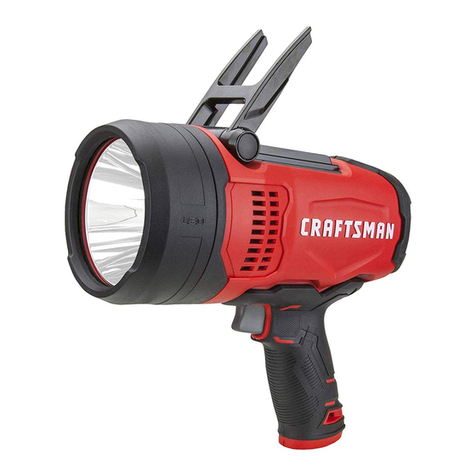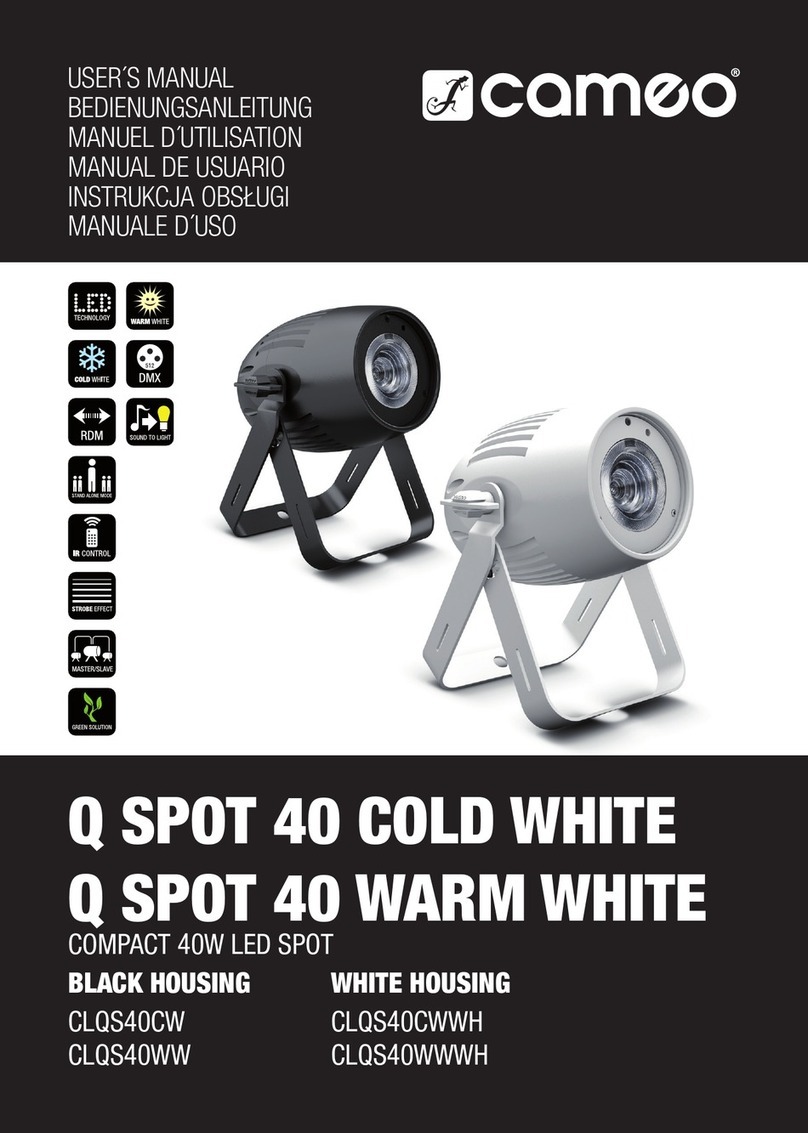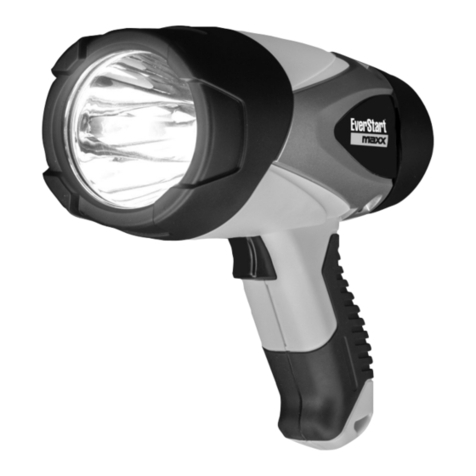8
SHARPY
• Installation
Sicherstellen, dass alle Teile für die Befestigung des Projektors in einwandfreiem Zustand sind.
Vor der Installation des Projektors die Stabilität der Verankerungsstelle überprüfen.
Das korrekt am Gerät eingehakte und an der Haltestruktur befestigte Sicherheitsseil muss so installiert werden,
dass bei einem Nachgeben der Haupthalterung die Fallhöhe des Gerätes so gering wie möglich ist. Nach einem
eventuellen Einsatz muss das Sicherheitsseil durch ein Originalersatzteil ersetzt werden.
• MINDESTABSTAND ZU BELEUCHTETEN OB EKTEN
Der Projektor muss so installiert werden, dass der Abstand zwischen den vom Lichtstrahl beleuchteten
Objekten und dem Objektiv des Projektors mindestens 12 Meter beträgt.
• Mindestabstand zu entzündbaren Materialien
Der Projektor muss so installiert werden, dass entzündbare Materialien mindestens 0,20 Meter von jedem Punkt
der Geräteoberfläche entfernt sind.
• Max. Raumtemperatur
Den Projektor nicht verwenden, wenn die Raumtemperatur (RT) 40°C überschreitet.
• Schutzart IP20
Das Gerät ist gegen das Eindringen von festen Fremdkörpern mit Durchmesser über 12 mm (erste Kennziffer 2)
geschützt, während es gegen Tropf,- Regen- und Spritzwasser sowie Wasserstrahlen (zweite Kennziffer 0)
empfindlich ist.
• Schutz gegen Stromschlag
Es ist Pflicht, das Gerät an eine Stromversorgungsanlage anzuschließen, die mit einer leistungsfähigen Erdung
ausgestattet ist (Gerät der Klasse I gemäß Richtlinie EN 60598-1).
Darüber hinaus wird empfohlen, die Zuleitungen der Projektoren mit korrekt bemessenen
Fehlerstromschutzschaltern vor indirekten Kontakten und/oder Kurzschlüssen zu schützen.
• Netzanschluss
Der Anschluss an das Stromnetz muss von einem kompetenten Elektroinstallateur ausgeführt werden.
Vergewissern Sie sich, dass Spannung und Frequenz der Netzversorgung mit den Werten übereinstimmen, für die
der Projektor ausgelegt ist und die auf dem Typenschild angegeben sind. Ebenfalls auf dem Typenschild ist die
Leistungsaufnahme angegeben. Um zu beurteilen, wie viele Geräte maximal an die Stromleitung angeschlossen
werden können, ist auf diese Angaben Bezug zu nehmen, damit Überlastungen vermieden werden.
• Temperatur der Außenfläche
Die Außenfläche des Geräts kann im Wärmebetrieb eine Höchsttemperatur von 100°C erreichen.
• Wartung
Vor Beginn von Wartungs- oder Reinigungsarbeiten am Projektor stets die Stromversorgung abschalten. Nach dem
Abschalten 10 Minuten lang keine Geräteteile abnehmen. Nach Ablauf dieser Zeit besteht praktisch keine Gefahr
mehr, dass die Lampe birst. Falls die Lampe ersetzt werden muss, weitere 20 Minuten warten, um
Verbrennungsgefahr zu vermeiden.
Das Gerät wurde so konzipiert, dass es die Splitter bei einem eventuellen Bersten der Lampe zurückhält. Die
Montage der Linsen ist obligatorisch vorgeschrieben; des Weiteren müssen sie bei sichtbarer Beschädigung durch
Originalersatzteile ersetzt werden.
• Lampe
Das Gerät ist mit einer Hochdrucklampe bestückt, die eine externe Zündeinheit verlangt.
Diese Zündeinheit ist in das Gerät eingebaut.
- Lesen Sie die vom Lampenhersteller gelieferte "Bedienungsanleitung" aufmerksam durch.
- Eine beschädigte oder von der Hitze verformte Lampe muss sofort ersetzt werden.
• Photobiologische Sicherheit
ACHTUNG. Nicht direkt in die Lichtquelle blicken.
Den Lichtstrahl nicht mit optischen Geräten oder anderen Instrumenten anschauen, die Lichtkonvergenz
verursachen könnten.
Das Produkt wurde für die Verwendung in den folgenden Bereichen entwickelt:
Studios, Bühnen, Theater, Ausstellungen, Messen, Veranstaltungen, Themenparks, Unterhaltungslokale,
Architekturbeleuchtung oder ähnliches.
INFORMATIONEN ZUR SICHERHEIT
IP20
12
189W
tc100°C
Gefahrenklasse 1
Gemäß Norm
EN 62471
DE
ta40°C
